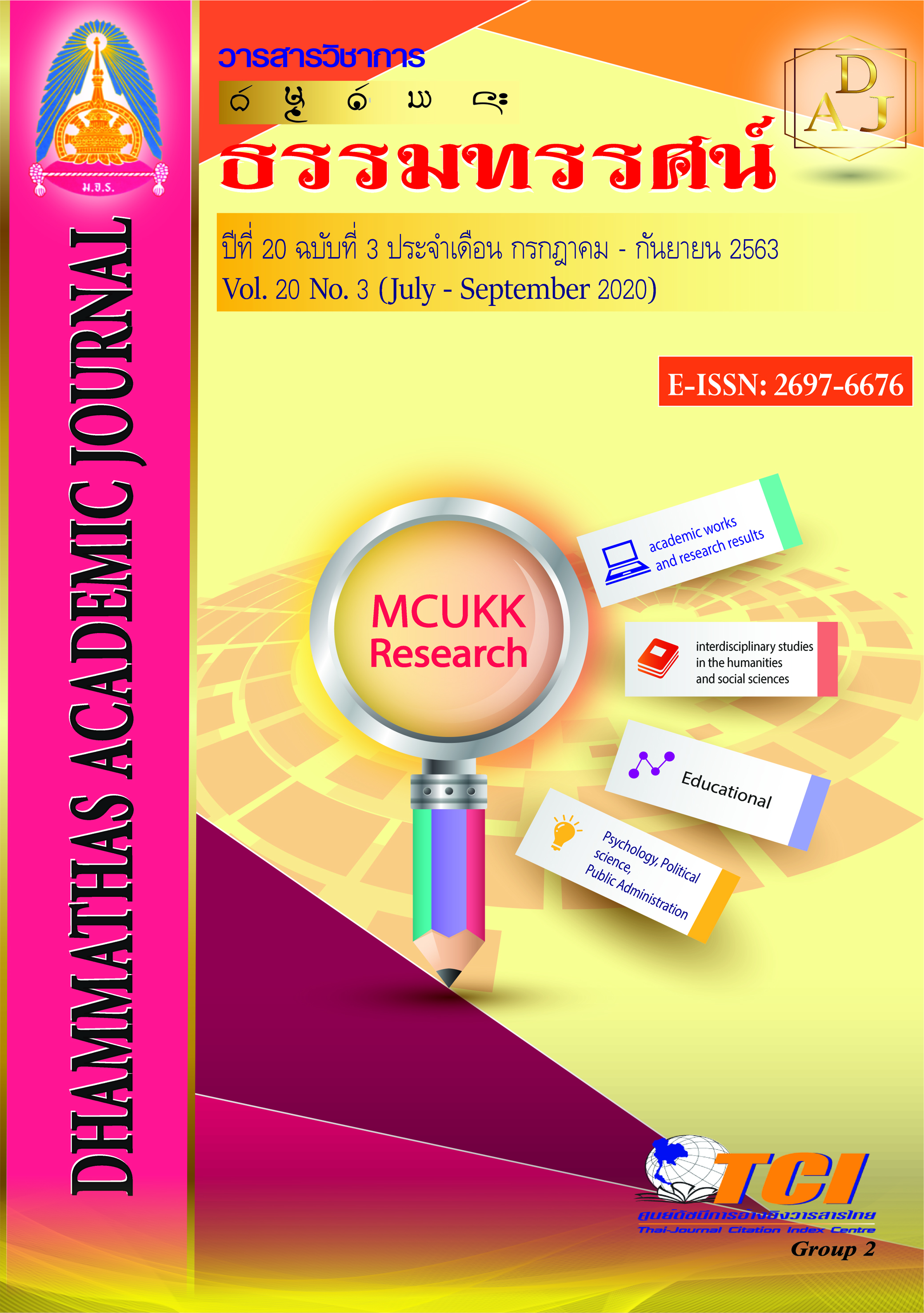การพัฒนาโปรแกรมภาพตามหลักการของเกสตัลท์ สำหรับเพิ่มความใส่ใจต่อเนื่องและความจำขณะทำงานในวัยผู้ใหญ่ตอนต้น
Main Article Content
บทคัดย่อ
การวิจัยครั้งนี้ มีวัตถุประสงค์เพื่อ 1) พัฒนาโปรแกรมภาพตามหลักการของเกสตัลท์สำหรับเพิ่มความใส่ใจต่อเนื่องและความจำขณะทำงานในวัยผู้ใหญ่ตอนต้น และ 2) ศึกษาผลการใช้โปรแกรมที่พัฒนาขึ้นโดยวิธีการวัดด้านพฤติกรรม กลุ่มตัวอย่างเป็นนักศึกษาสาขาวิชาการท่องเที่ยวและอุตสาหกรรมการบริการเพื่อการท่องเที่ยว มหาวิทยาลัยหัวเฉียวเฉลิมพระเกียรติ อายุระหว่าง 20-22 ปี จำนวน 60 คน จัดเข้ากลุ่มทดลองและกลุ่มควบคุมด้วยวิธีการสุ่มอย่างง่าย เครื่องมือที่ใช้ในการวิจัย ประกอบด้วย โปรแกรมภาพตามหลักการของเกสตัลท์ แบบทดสอบความใส่ใจต่อเนื่อง และแบบทดสอบความจำขณะทำงาน วิเคราะห์ข้อมูลด้วยค่าสถิติการแจกแจงความถี่ ค่าร้อยละ ส่วนเบี่ยงเบนมาตรฐาน สถิติทดสอบทีและการวิเคราะห์ความแปรปรวนพหุคูณ
ผลการวิจัยพบว่า โปรแกรมที่พัฒนาขึ้นมีความเหมาะสมในการใช้เพิ่มความใส่ใจต่อเนื่องและความจำขณะทำงานในวัยผู้ใหญ่ตอนต้น ค่าเฉลี่ยความถูกต้องและเวลาปฏิกิริยาการตอบสนองหลังการทดลองของกลุ่มใช้โปรแกรมและเมื่อเปรียบเทียบกับกลุ่มไม่ใช้โปรแกรมแตกต่างกันอย่างมีนัยสำคัญทางสถิติที่ระดับ .01 สรุปได้ว่า โปรแกรมภาพตามหลักการของเกสตัลท์สามารถนำไปใช้ฝึกเพิ่มความใส่ใจต่อเนื่องและความจำขณะทำงานในวัยผู้ใหญ่ตอนต้นได้
Article Details
References
Anderson, J. R. (2004). Cognitive psychology and its implications. (6th ed.). New York : Worth Publishers.
Bahrick L. E. (2010). Intermodal perception and selective attention to intersensory redundancy: Implications for typical social development and autism. In: Bremner G, Wachs TD, editors. Blackwell handbook of infant development. 2nd ed. Oxford UK : Blackwell.
Chun M. M., Golomb J. D. & Turk-Browne N. B. (2011). A Taxonomy of external and internal attention. Annual Review of Psychology, 62, 73-101.
Cohen, J. (1988). Statistical Power Analysis for the Behavioral Sciences. (2nd ed.). Hillsdale. NJ : Lawrence Erlbaum Associates, Publishers.
Cowan, N. (2010). The Magical Mystery Four: How Is Working Memory Capacity Limited, and Why?. Current Directions in Psychological Science, 19(1), 51-57.
Desimone, R. & Duncan, J. (1995). Neural Mechanisms of Selective Visual Attention. Annual Review of Neuroscience, 18, 193-222.
Edmonds, W. A. & Kennedy, T. D. (2017). An applied reference guide to research designs: Quantitative, qualitative, and mixed methods. (2nded.). Thousand Oaks, CA : Sage.
Fougnie, D. (2008). The Relationship between Attention and Working Memory. United States of America : Vanderbilt University.
Kaewkaen, P. (2012). Attention Process and the Modified Knowledge for Cognitive Science Research. Research Methodology and Cognitive Science, 10(1), 1-10.
Koffka, K. (1935). Principles of Gestalt psychology. London, U.K. : Lund Humphries.
Microsoft Attention Spans Research Report. (2015). Microsoft Attention Spans Research Report. https://www.scribd.com/document/265348695/Microsoft-Attention-Spans-Research-Report (Accessed 23 February 2019).
Oldfield, R. C. (1971). The assessment and analysis of handedness: The Edinburgh inventory. Neuropsychologia, 9(1), 97-113.
Sarter, M., Gehring, W. J. & Kozak, R. (2006). More attention must be paid: The neurobiology of attentional effort. Brain Research Reviews, 51(2), 145-160.
Souto, D. & Kerzel, D. (2011). Attentional constraints on target selection for smooth pursuit eye movements. Vision Research, 51(1), 13-20.
Schwartz, B. L. (2011). Memory Foundations and Applications. United States of America : SAGE publications, Inc.
Treisman, A. M. & Gelade, G. (1980). A feature-integration theory of attention. Cognitive psychology, 12(1), 97-136.
